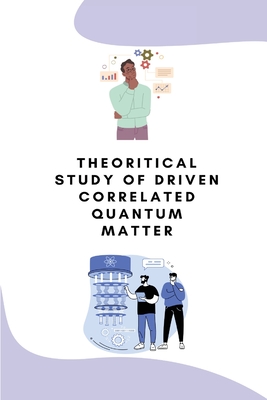You are here
Back to topTheoritical study of driven correlated quantum matter (Paperback)
Description
Periodically driven closed quantum many-body systems have become an active
field of research nowadays. The drive frequency, in such systems, is
an important parameter since it can be tuned to realize several interesting
phenomena that have no analog in equilibrium systems. A systematic theoretical
understanding of such phenomena has already been achieved in highfrequency
regime using inverse frequency perturbation expansions. These
kinds of expansion diverge in the low-frequency region where it is difficult
to find any semi-analytic techniques. The purpose of this thesis is to establish
a framework which works well for low to moderate drive frequencies.
Adiabatic-impulse approximation which we develop in this thesis provides
such a technique. We show that this method with proper modifications can
be successfully applied to describe many features of low-frequency phase diagram
of periodically driven non-interacting system like irradiated graphene in
frequency(ω)-amplitude(A0) plane. We compute phase bands of such system
which are the eigenphases of corresponding time-evolution operator U(t, 0)
using adiabatic-impulse theory. We show that these results match extremely
well with exact numerical calculations in the low drive frequency region. We
also show that in systems like interacting bosons placed in a strong electric
field the phenomena of dynamic freezing can be enhanced by driving more
than one parameter of the Hamiltonian at some specific ratio of drive frequencies.
This phenomenon is understood as Stuckelberg interference of few
instantaneous energy levels in the many-body spectrum, undergoing exact
level crossing. We also study dynamics of driven systems in the presence of
stochastic resets. We find that such resets at random times result in a novel
steady value of reset averaged observables. On the other hand, stochastic
noise in the vector potential of an incident electromagnetic wave may drastically
change the phase band structure of irradiated systems at some specific
crystal momentum points in the Brillouin-zone. We numerically show that
self- averaging limit exists in such noisy dynamical systems and the modifications
in the phase band structure can be understood by analyzing the noise
averaged Hamiltonian.
